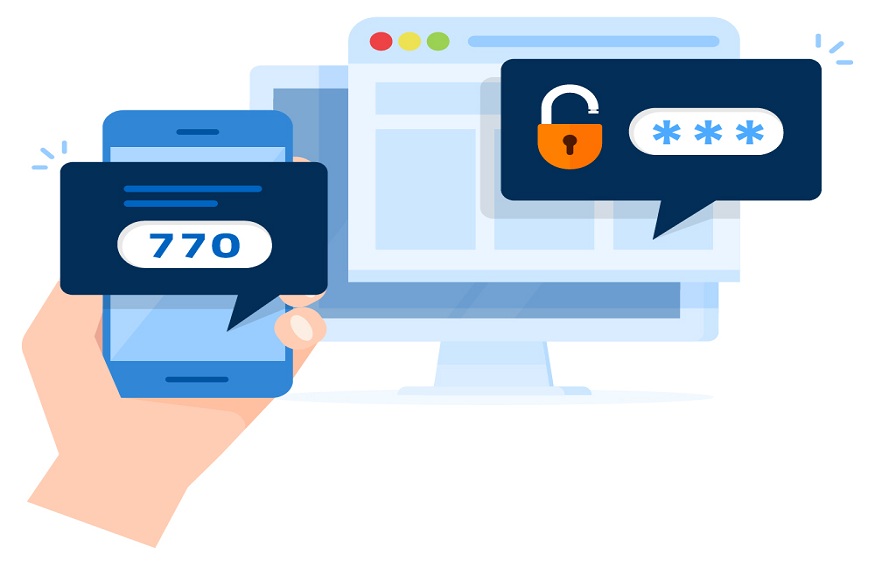
OTP Integration API For Providers: Crucial Information
The buying habits of the present differ from those of the past. Online platforms are increasingly being used in modern culture for both making purchases of products and services as well as for carrying out financial transactions.
Due to the world’s growing digitalization and the dramatic acceleration of this process brought on by the COVID-19 epidemic, both businesses and people are now more vulnerable to fraud.
Today, more than ever, a mechanism to prevent this kind of fraud is crucial.
Explaining the OTP (One Time Password)?
The utilization of the One-Time-Password (OTP) system from trusted otp integration api for providers may be employed when there is a requirement for a single-use password to facilitate login or ensure secure access.
In the given scenario, an individual expresses their intention to make an online purchase and utilize a credit card as the preferred payment method. By implementing an OTP (One-Time Password) system, the user will receive a text message comprising a unique code (referred to as a token) that necessitates inputting into the designated website or application in order to proceed with the purchase transaction. This assures the individual’s ownership and ensures that the action is performed by the individual himself.
The goal is to build a firewall to prevent online identity and personal information theft. Numerous internet financial systems and corporations like Google and Facebook employ this technology already. We stress again that any business serious about protecting their clients’ financial information should use an SMS-based solution like this.
The OTP system has several advantages:
Preventing Fraud:
Compared to relying just on static passwords, OTP authentication provides a number of benefits. Despite a fraudster collecting a password, they would be unable to use it in a subsequent attempt, because to the one-time nature of “OTPs” tokens’ usage. Even if a person fell for a phishing or malware scheme that recorded their keystrokes, they would be safe. Password-stealing tools of the past would be useless against this data.
Blocking Robots:
This technique is also helpful in preventing bots from generating automated profiles and performing persistence tests, both of which may be used to bypass the validation of tests like CAPTCHA (“Completely Automated Public Turing test to tell Computers and Humans Apart”).
Codes And Tokens:
One other perk is that attackers can’t get a hold of the secret codes and use them again since they’re one-of-a-kind and expire in a matter of minutes. Random algorithms are also often used to create OTP tokens. This ensures the user is who they say they are, speeds up transactions, and foils any efforts at theft.
2FA, Or Two-Factor Authentication:
Two different verification methods must be used in accordance with the two-factor authentication principle in order to get access to an online account. Two-factor authentication (2FA) is a security technique that often uses a user-created password together with a one-time password (OTP) that is delivered to the user’s device that is produced randomly and has a time restriction.
Mitigating Identity Theft:
The utilization of One-Time Passwords (OTPs) for user authentication significantly enhances the difficulty that hackers encounter when attempting to gain unauthorized access to the accounts of both customers and employees within organizations.
To elucidate the matter at hand, let us contemplate the ramifications that ensue when an unauthorized individual attempts to gain access to another person’s account. An unsolicited code is transmitted to the intended recipient without their explicit request. This recent development is rather peculiar.
Although the company can only engage in conjecture regarding the authenticity of the login, the user demonstrates awareness of an anomaly and proactively enhances security measures, such as modifying their password.
In the event that an unregistered device is utilized to gain access to a user’s account, the system has the capability to dispatch a verification message to the user’s designated phone number or email address for authentication purposes. With just one click, account holders may report suspicious behavior.
Users are in charge of their accounts and may prevent their accounts from being locked at the first evidence of questionable conduct. Plus, customers gain confidence in a company’s commitment to securing their data when they get notifications like this.
Extremely Unlikely That Anybody Else Will Figure Out:
With only four to eight random digits, OTPs are surprisingly effective at reducing the hazards associated with insufficient password security.
Let’s take a mathematical look at this. A potential identity thief would have very little time to accurately guess a random six-digit code before it becomes invalid.
- That’s 10 different outcomes (0–9) multiplied by themselves six times (1010101010).
- An identity thief has a 0.000001% chance of successfully guessing your OTP, or one in a million.
- The average one-time password has six digits. If they use all eight, the identity thief has a higher chance of winning the lotto.
- Provides A Respite For Your IT Department:
Everyone was given a large number of login credentials. Who among us hasn’t misplaced at least one? Managing all of your internet accounts, from streaming services to newspapers, is no easy feat.
Being forgetful is a human trait. Users will need to contact IT support or customer service to restore access to their accounts if there are no other available verification options. This kind of action can require a significant time and energy commitment.
One-time passwords (OTPs) implementation may be seen of as a potential alternative to spending a lot of effort on manual password resets.
Because of this situation,
- This frees up IT and customer support staff to concentrate on higher-value initiatives and problems for the company.
- The process of changing the user’s password and regaining access to their account is streamlined and simplified.
- Scalability And Ease Of Integration For Businesses:
Organizations may quickly integrate OTPs into their applications and products with the help of verification APIs.
These programmatic verification integrations may quickly recoup their costs through:
- Defending against Cyber Attacks From Within And Without
- Win the confidence of your customers.
- Putting your most important human support personnel back to work on strategic initiatives.
Conclusion:
In conclusion, sms gateway india for otp for verification is an effective tool for companies concerned with the safety and comfort of their users throughout the authentication process.
High security, simple deployment, and many use cases are just a few of the benefits that enterprises may reap from using SMS API for OTP. However, organizations may have difficulties in deploying SMS API for OTP verification, such as assuring device compatibility and understanding the rules of various carriers.





